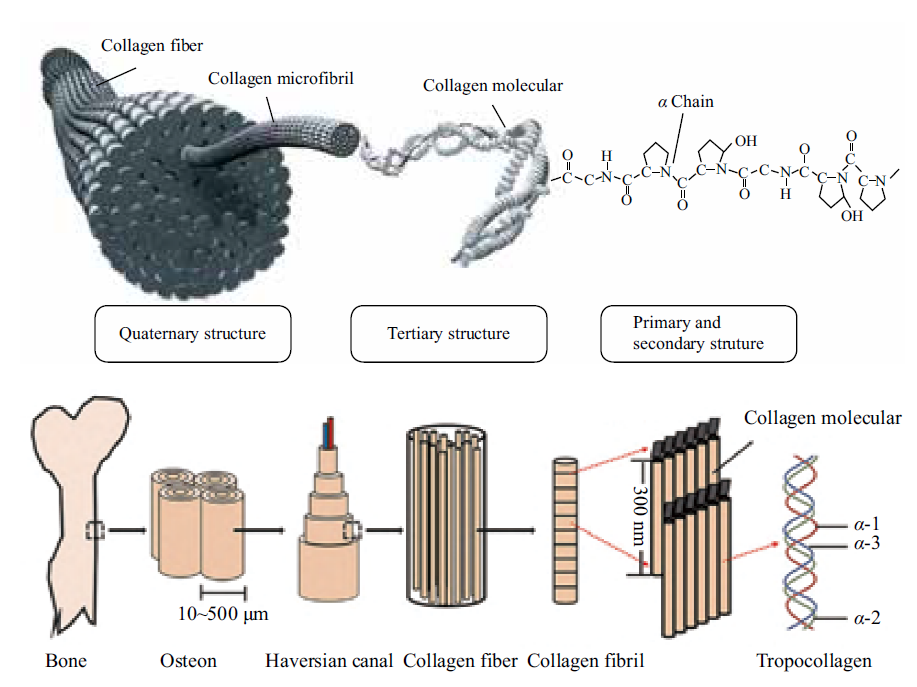Collagen peptide, one kind of polypeptides mixture with both nutrition and physiological regulation function, is extracted from animal tissues. Collagen peptide can be seen as a hydrolyzed product of collagen, the main protein in connective tissues of animal, but with different microstructure from that of collagen. The three peptide chains of collagen are connected by covalent bond and hydrogen bond, and the three-strand helix structure remains intact, while the three-strand helix structure of collagen is completely loosened to form three unconnected single peptide chains as for collagen peptide. For possessing a large amount of excellent properties, such as low immunogenicity, biocompatibility, hemostatis, biodegradability, nutrition, moisture retention, skin whitening, anti-wrinkle, anti-aging, lipid-lowering, helpful to calcium-filling, as well as more powerful function could be obtained by physical, chemical modification and blending with natural and synthetic polymers. Collagen peptide has been extensively utilized in medicine, biology, cosmetics, health care industry, food and other fields. In this paper, the extracting source, type and molecular structure of collagen peptide, the physical and chemical properties, extracting methods, main modification technologies of collagen peptide, as well as its main functions and applications were introduced. The research trend and development prospect of collagen peptide were also pointed out.



